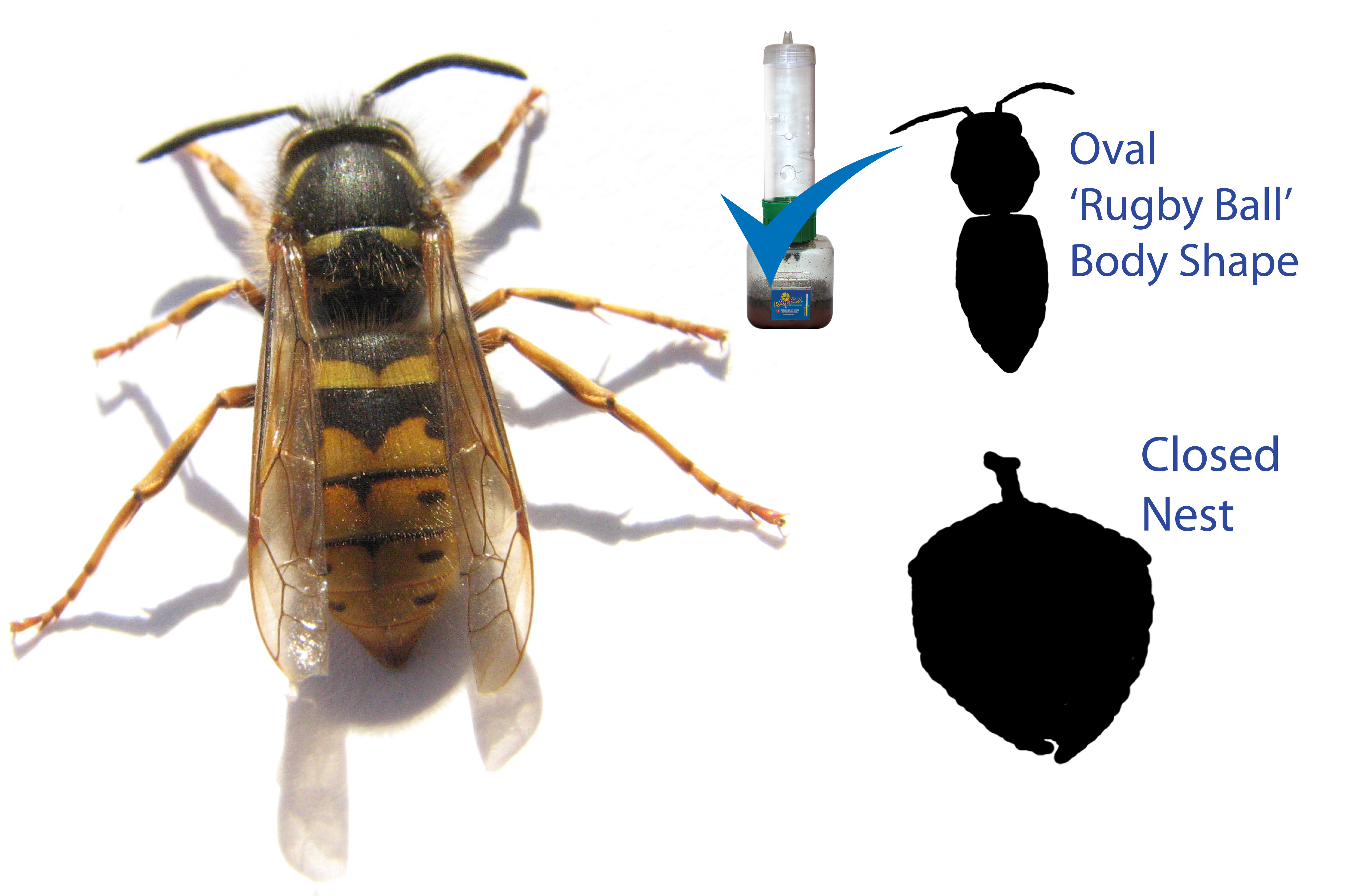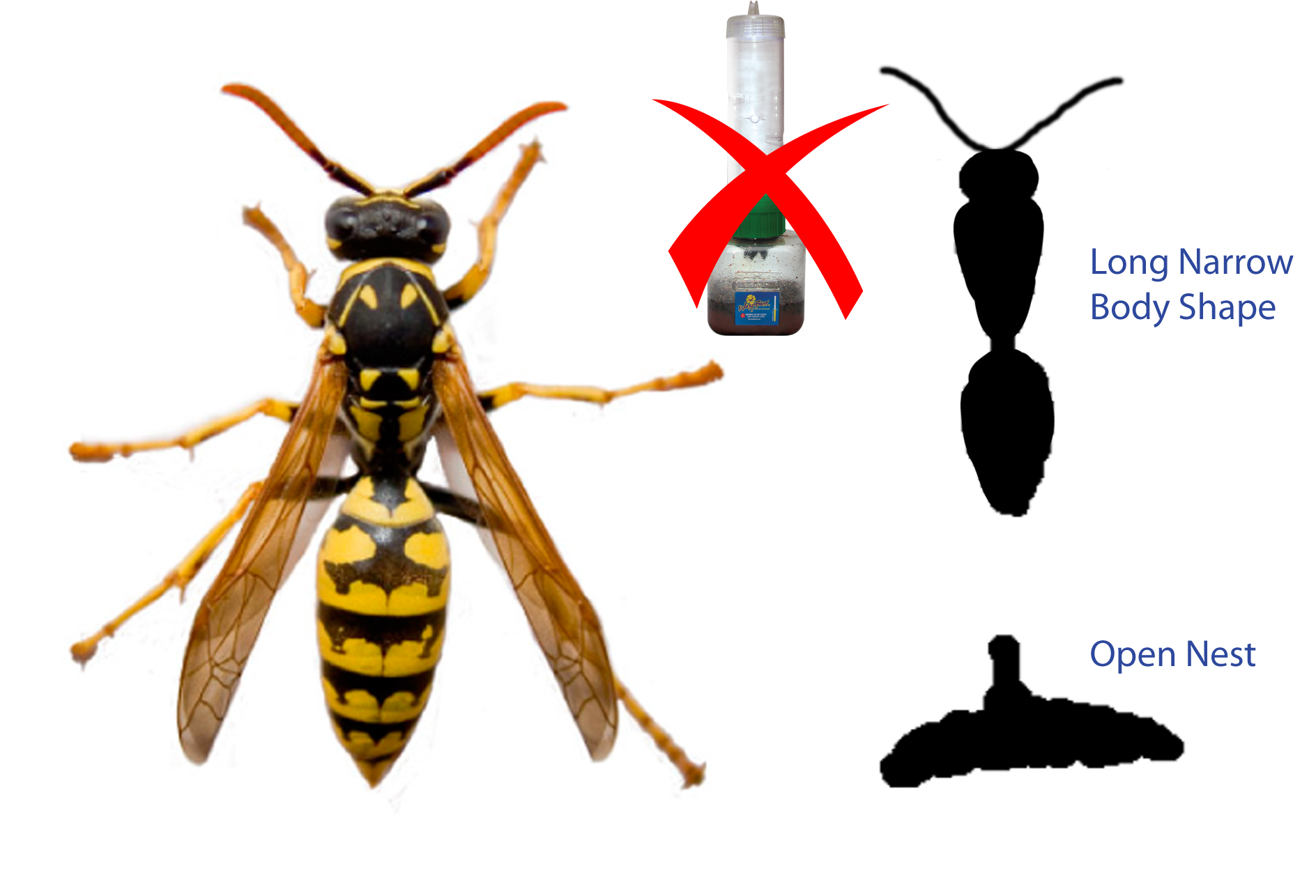There are countless thousands of species of wasp. The overwhelming majority are solitary parasitic wasps that prey on other insects and are therefore by and large beneficial to humans. Many of these solitary wasps are little bigger than a pin head and so are just overlooked or mistaken for midges. The wasps that most people care about are the social wasps that build nests and bother us for our food. That said, people still mistake other insects for wasps and so this page is dedicated to help people identify wasps. It is important to note that the WaspBane wasp trap is effective against vespine wasps which are found in central and northern Europe and North America. The WaspBane wasp trap is not effective against polistes (paper) wasps.
Vespine Wasps
Vespine wasps are relatively easy to identify because they generally have a tight oval shape, a little bit like a rugby ball and they have enclosed nests. Vespine wasps are true social wasps in that they have a single queen which rules over the whole of her colony.
There are three ‘familes’ of vespine wasps. These include the Vespula family, the Dolichovespula family and the Vespa family.
Vespula Wasps
Dolichovespula Wasps
Vespa Wasps
Polistes Wasps
Polistes wasps can be differentiated from vespine wasps because they are long and thin, especially in the middle between the thorax and abdomen. In addition, polistes wasps generally have open ‘upside down umbrella’ shaped nests. Polistes wasps form colonies from several cohabiting queens and their behaviour places them half way between solitary and true social wasps. Polistes wasps are found in hotter climates such as South Europe, the Mediterranean and Southern and Central America. It is the company’s view that polistes wasps are an important barrier to the spread of malaria carrying mosquitos and as such the WaspBane wasp trap is not designed to catch polistes wasps.
Other Insects
Bees and especially honey and masonary bees are frequently mistaken for wasps. Honey bees can be seen feeding from flower heads and sometimes will come to raw honey if it is left out on the table. Honey bees are vital to our crops and provide us with honey. Masonary bees can be found burrowing into the mortar between bricks especially if the mortar has become soft over time. In routine use the WaspBane wasp trap does not catch honey or masonary bees.
Hover flies are harmless flies that feed on flowers. For their own protection, hover flies have developed camouflage which makes them look like wasps. The easiest way to identify hover flies is that their wings stick out at 90° to their bodies and they have a round pad on the end of their proboscis (like filth flies) and they have no manibles.

 Follow
Follow

